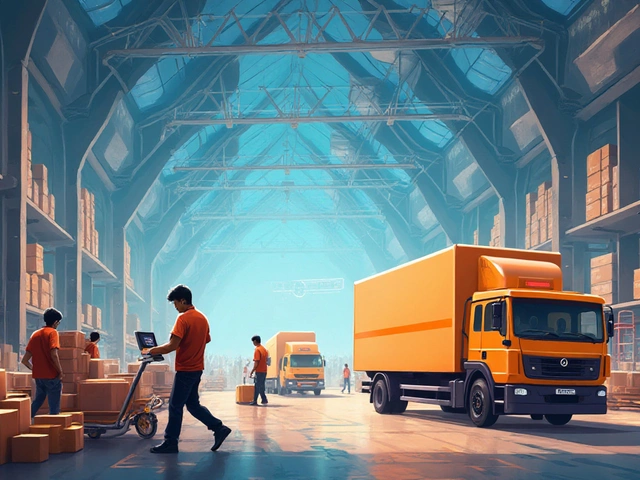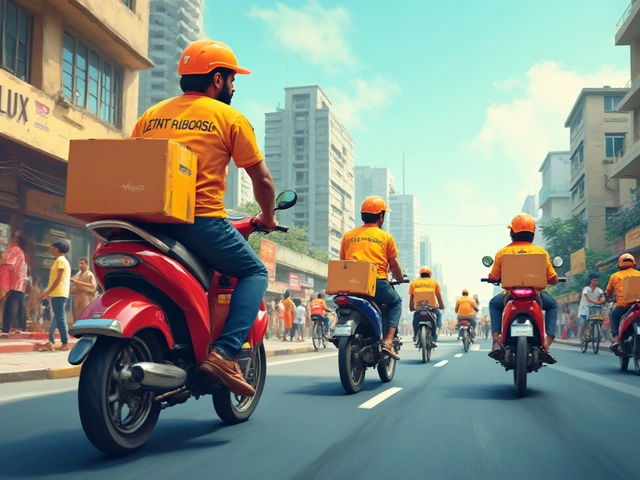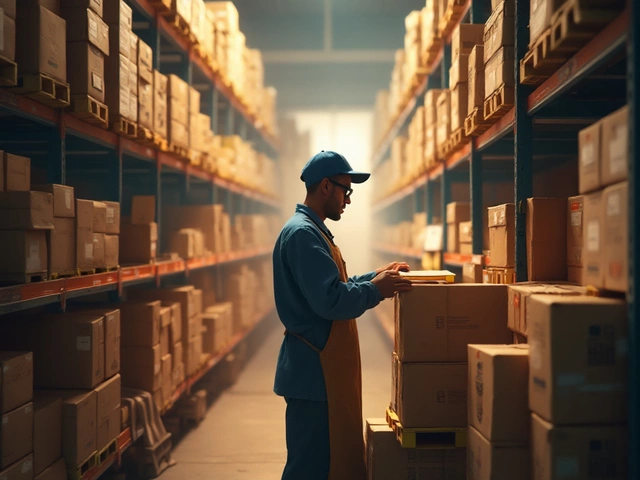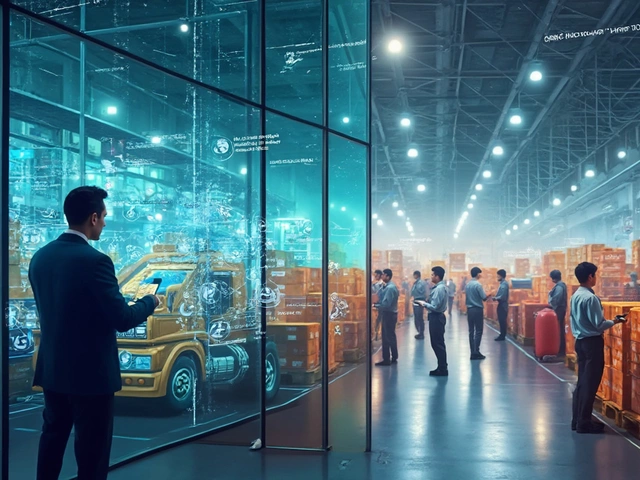The last stretch before a package hits your hands is when things get the most hectic. Believe it or not, about 53% of shipping costs can come from just this final step—the last mile. Weather, traffic jams, porch pirates, even a dog on the loose, can turn a simple delivery into a headache for everyone. Companies throw millions at the problem, but even then, the risks keep stacking up higher than your neighbor’s Amazon boxes. It’s a wild west out there, full of unexpected twists that can ruin the best-laid shipping plans. Some people still don’t realize how much can go wrong, or how much money hangs in the balance every single time someone clicks “buy now.”
What Does Last Mile Delivery Really Mean?
Last mile delivery sounds simple—a box travels from a warehouse to your door. Simple, but never easy. The whole idea is to get orders into customers’ hands fast and without drama. This last part of the journey spans only a few miles in most cities, but those miles can pack more risk and cost than the thousands before it.
Picture this: A logistics center buzzes with activity, sorting hundreds of boxes. Those boxes go out to trucks, vans, bikes, sometimes even drones. Each order could end up at a family’s home, a hyper-busy apartment complex, a rural outpost, or maybe an office. The challenge? Streets can be jammed or narrow, buildings might have security gates, elevators can break, customers might not be home, and sometimes addresses aren’t even right. These mix-ups inflate costs, slow things down, and drive everyone—from the delivery guys to customer support—crazy.
If you’ve ever waited for a “guaranteed same-day delivery” and been met with a sorry email about delays, you’ve seen the last mile of the supply chain crumble in real-time. And the risks don’t end with lateness. Lost or stolen packages are a real problem. Around 260 million delivered parcels were reported stolen in the US just last year (2024). Then there’s bad weather, road closures for parades, technical glitches, and the ever-delicate human factor—like a new driver who can’t find his way through your neighborhood’s maze of crescents and cul-de-sacs.
So, last mile delivery isn’t just “the end of the line”—it’s a high-stakes, resource-hungry, and reputation-critical piece of the whole logistics puzzle.
Where the Risks Come From (and Why They Matter)
Why is the last mile so risky? For starters, it’s totally unpredictable. Unlike the long-haul journey—where loads move in bulk, on fixed routes, with lots of control—the last mile is where the chaos sneaks in. Each delivery stands alone and faces unique hurdles.
You might be shocked to learn that failed deliveries cost retailers and carriers billions. A recent study (Capgemini Research Institute, 2023) found companies lose about $2.1 billion a year due to failed final mile attempts. But it’s not just cash—they pay in lost customer trust and negative reviews, too. Worse yet, every extra trip or reroute to fix a failed drop wastes fuel and man-hours and pumps out even more emissions.
The risks come from every direction:
- Traffic delays: City centers with endless gridlock, rural roads washed out by rain, or unexpected construction zones can double or triple delivery times in seconds.
- Incorrect addresses: Typos, customer mistakes, or outdated databases force drivers to search, call, and sometimes return empty-handed.
- Package theft: Porch piracy is up—organized criminals watch for delivery vans and snatch boxes minutes after they arrive.
- Failed delivery attempts: Customers out for lunch, buildings locked down, pets on the loose, or intercoms out of order create instant fails.
- Weather events: One bad winter day or flash flood ruins hundreds of deliveries, forcing reschedules and refunds.
- Lack of tech: Sometimes carriers don’t have real-time tracking, so nobody knows if a problem pops up until it’s too late.
And all this happens while customers expect everything to be “free and fast.” It’s a recipe for rising anxiety among logistics teams. Companies know slipping up here means lost repeat business—not just a one-time angry tweet.
Even gig driver networks, often used in urban last mile delivery, come with risks. No-shows, burnout, and constant turnover can make promises tough to keep. If you don’t already see the maze of risks staring down retailers and carriers, just ask any driver about their worst delivery day—that’ll clear things up.
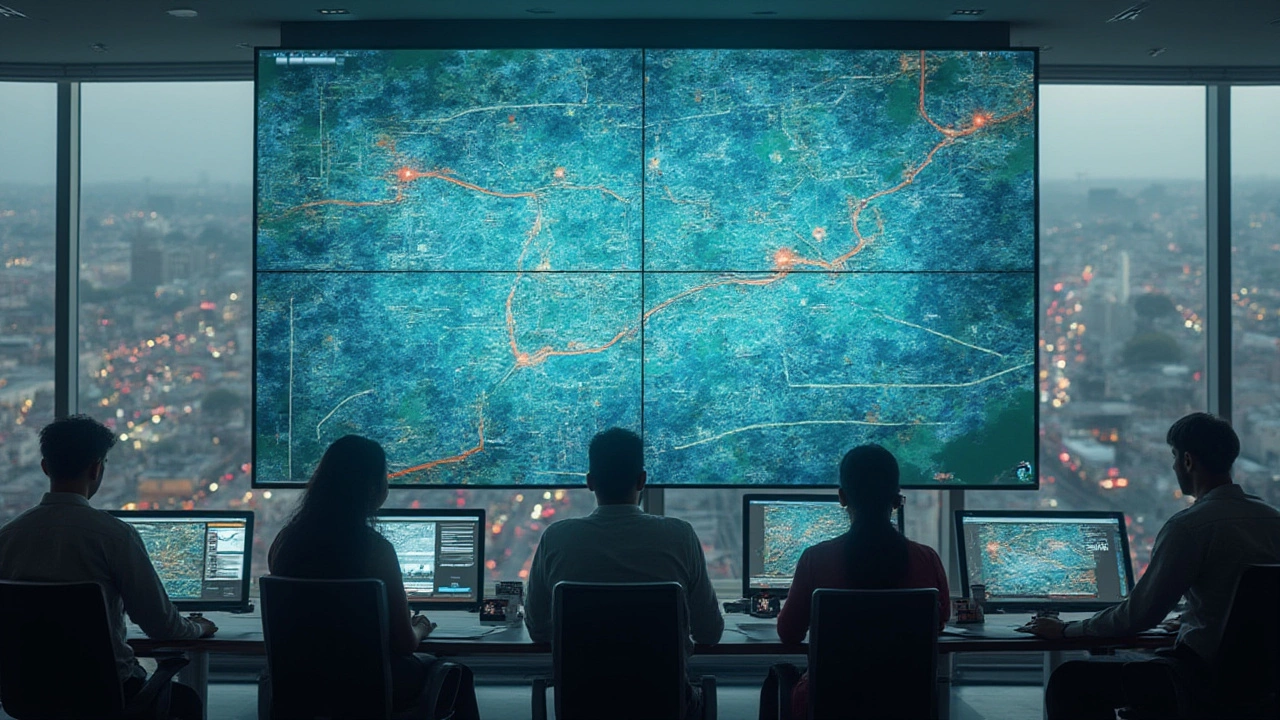
The Hidden Costs No One Likes Talking About
Slicing a massive shipping charge off a customer’s checkout total feels good for a business, but the hidden price tag for last mile delivery can ruin the mood. Many companies try to absorb these costs, thinking speedy (and free) shipping makes shoppers more loyal. But last mile shipping costs three to four times more per package than moving goods cross-country.
Here’s a mind-bender: The average cost of the last mile can be more than 50% of the overall shipping price, even though it covers such a short distance. Labor is a big culprit. Urban deliveries can require multiple stops per mile—meaning more stops, more starts, more delays, and more fuel burned. Missed drops mean redelivery or, worse, expensive route changes for pickups and returns.
Residential addresses often complicate things with limited parking, security restrictions, and building access headaches. Multistory apartments can easily trap a driver on the wrong floor or force a long phone-tag hunt for residents. That’s just time evaporating into thin air.
And then there’s the tech bill. Tracking, routing software, notifications—companies need constant upgrades, and that doesn’t come cheap. The hidden costs multiply if a business tries to save by cutting corners: frustrated drivers, more accidents, rising theft, and even claims and insurance premiums shooting up. Not all packages fit standard boxes or protocols, either—think of groceries, heavy furniture, or anything that needs special handling. Those oddballs can double delivery costs instantly.
Below is a quick snapshot of costs and their typical impact on last mile delivery:
| Cost Factor | Average % of Delivery Cost |
|---|---|
| Labor | 35-45% |
| Fuel & Vehicle | 18-25% |
| Technology/Tracking | 6-15% |
| Failed Deliveries/Returns | 12-20% |
| Theft/Damage | 3-7% |
Add all this up, and it’s easy to see why last mile shipping remains a profit killer for many businesses, or why so many invest in new tech and process changes every year just to keep up.
How Companies Are Battling Last Mile Delivery Risk
The smartest players aren’t just crossing their fingers and hoping for the best. Instead, they’re using digital tools, smarter processes, and even crowdsourcing to make sure packages reach doorsteps, no matter what tries to block them. Dynamic route optimization is massively popular now. With real-time analytics, companies can dodge traffic jams, change routes if something pops up, and shave minutes (sometimes hours) off delivery runs. Some services even use AI to predict when traffic or weather might strike so they can reschedule deliveries before disaster happens.
Then there’s enhanced tracking. The “where’s my order?” text is now normal, and businesses encourage customers to use delivery apps, real-time maps, or smart lockers so nobody’s left guessing. Better transparency slashes failed deliveries and makes everyone less cranky. If you know a package is coming and get an alert, you’re more likely to be home or send a friend to grab it. Smart lockers have popped up in supermarkets, apartment lobbies, and office parks, offering a safer alternative to unprotected doorsteps.
Another tactic: crowdshipping and gig driver networks. Some companies use platforms similar to Uber and DoorDash that let anyone with a reliable car sign up to deliver packages on demand. This rapidly grows the army of drivers and, if managed right, increases delivery success.
Safety and security have seen upgrades too. From tamper-proof boxes to porch cameras and even neighborhood watch programs targeting theft, companies know that one stolen box can lose a loyal customer forever. And sustainability isn’t an afterthought anymore. Electric vehicles, consolidated drops, and routes planned for minimal carbon impact matter to both regulators and eco-minded shoppers.
Here’s a set of quick-fire tips anyone in logistics—or expecting a delivery—can use:
- Always double-check your delivery address before confirming a shipment.
- Use delivery alerts and install a porch camera if you live in a high-theft area.
- Companies: Invest in real-time tracking and dynamic routing tools, not last-decade solutions.
- Train delivery staff to handle common challenges in your region—don’t just hand them a GPS.
- Use secure pickup options: lockers, parcel rooms, or require in-person signoff for high-value orders.
The companies getting this right build customer loyalty and cut costs, while their competitors keep fighting fires and apologizing. It boils down to treating the last mile delivery risk like any business-critical operation, not a throwaway afterthought.

The Future of Last Mile Delivery: What to Expect Next
Tech doesn’t sleep, and last mile delivery is set for some wild shifts over the next five years. Think drones, sidewalk robots, and even autonomous delivery vans. Trials are already running in cities like Los Angeles and Dublin, where compact delivery bots scoot down sidewalks, skipping traffic altogether. Amazon, Walmart, and FedEx are all investing heavy in their own last-mile tech—expect these tools to hit more neighborhoods soon.
Then there’s smart forecasting. Advanced software is learning traffic, weather trends, and even local events so companies can spot risks days before they bite. Artificial intelligence isn’t just for gaming or finance anymore—it’s quietly reshaping how packages move through busy city grids and rural trails alike.
On the customer side, more people care about how sustainable their deliveries are. Back in 2024, around 72% of shoppers said that eco-friendly delivery would make them pick one store over another. This push drives retailers to plan better consolidated routes, use bikes or electric vans, and choose carbon-neutral drop-offs. Urban centers could see crowdshipping paired with public transit to lower emissions.
Expect changes to regulations, too. Cities want fewer delivery vans clogging up prime real estate, so they’re piloting “micro-distribution hubs”—local warehouses close to neighborhoods, so smaller, greener vehicles can handle the last mile. More fees and access limits for polluting vehicles are on the radar in cities like London and New York.
As all these shifts land, the risk game will change. Delivery times might get faster, but the skills needed—from data science to hands-on troubleshooting—will keep rising. The companies that tackle last mile delivery risk as a real business challenge and keep customers in the loop will win—leaving everyone else scrambling for solutions.

